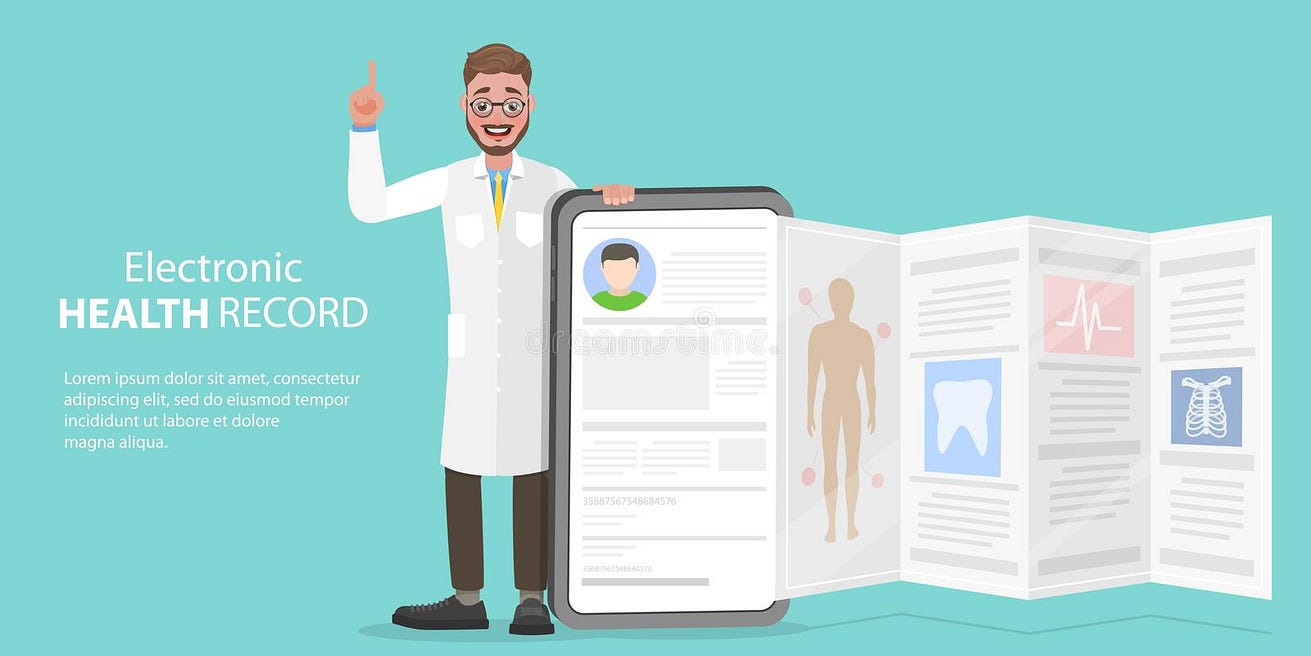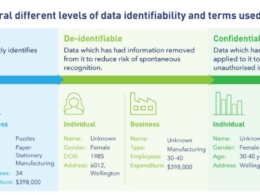This is a republication of the article “What is the status of electronic health records?”, with the title above.
The Commonwealth Fund
JUN 05, 2020
dreamstime
Australia
- The Australian Digital Health Agency, established in July 2016, has national responsibility for the country’s digital health strategy.
- An interoperable national e-health program based on personally controlled unique identifiers is now in operation.
- More than 6 million patients (one-quarter of Australians) and 13.4 million providers are currently registered.
- As of February 2019, all Australians have a My Health Record created for them unless they have opted out of the system, although individuals can choose to delete their record at any time.
- The record supports prescription information, medical notes, referrals, and diagnostic imaging reports.
- Patients can view their own medical information and control who can see it, as well as add information about allergies, adverse reactions, and their health care wishes in the event that they become unable to communicate.
Brazil
- Information technology is coordinated nationally by the Department of Informatics, which is linked to the Ministry of Health.
- However, states and municipalities use different information systems, leading to data integration challenges and making it difficult to implement a national integrated electronic health record (EHR).
Canada
- Uptake of health information technologies has been slowly increasing in recent years.
- Provinces and territories are responsible for developing their own electronic information systems, with national funding and support through Canada Health Infoway.
- However, there is no national strategy for implementing electronic health records and no national patient identifier.
China
- Nearly every health care provider has set up its own EHR system.
- Within hospitals, EHRs are also linked to the health insurance systems for payment of claims, with unique patient identifiers (insurance ID or citizenship ID).
- However, EHR systems vary significantly by hospital and are usually not integrated or interoperable.
- Patients often must bring with them a printed health record if they want to see doctors in different hospitals.
- Even if hospitals are owned by the same local bureau of health or affiliated with the same universities, different EHR systems may be used.
Denmark
- IT is used at all levels of the health system as part of a national strategy supported by the National Agency for Health IT.
- Each of the five regions uses electronic health record (EHR) systems for hospitals, with adherence to national standards for compatibility.
- All citizens in Denmark have a unique electronic personal identifier that is used in all public registries, including health databases.
- The government has implemented an electronic medical card storing encoded information about each patient’s prescriptions and medication use; this information is accessible by the patient and all relevant health professionals.
England
- The NHS number assigned to every registered patient serves as a unique identifier.
- All general practice patient records are computerized.
- Since April 2015, all GP practices have been contractually obliged to offer patients the choice of booking appointments and ordering prescriptions online.
- As of March 31, 2016, practices are required to offer patients access to their own detailed coded record, including information about diagnoses, medications and treatments, immunizations, and test results.
- Practices are not required to allow patients access to information that clinicians enter in free-text fields.
- When electronic records are not available to patients, such as in dentistry, they can request a paper copy.
France
- The electronic health record (EHR) project ( Projet dossier medical partagé) covered roughly 1,882,503 patients at the end of 2018, and an estimated 731 hospitals (one-third of all hospitals).
- Hospital-based and office-based professionals and patients have a unique electronic identifier, and any health professional can access the record and enter information subject to patient authorization.
- Interoperability is ensured via a chip on patients’ health cards.
Germany
- Since 2015, electronic medical chip cards have been used nationwide by all the SHI-insured; they encode information including the person’s name, address, date of birth, and sickness fund, along with details of insurance coverage and the person’s status regarding supplementary charges.
- Patients can decide whether they want clinical data, such as on medications, to be stored and whether these are to be passed on to their physician.
India
- The Ministry of Health and Family Welfare published the first national standards for electronic health records (EHRs) in 2013.
- An expert committee was then established to support the adoption and implementation of an EHR system throughout the country.
- As of 2016, however, survey results have revealed that uptake of the system has been slow as compared to other middle- and high-income countries. Currently, there is no universal patient identifier.
Israel
- All health plans have electronic health record (EHR) systems that link all community-based providers: primary care physicians, specialists, laboratories, and pharmacies.
- All GPs work with EHRs. Hospitals are also computerized but are not fully integrated with health plan EHRs.
- The Ministry of Health is leading a major national health information exchange project to create a system for sharing relevant information across all hospitals and health plans.
Italy
- The New Health Information System ( Nuovo sistema informativo sanitario, or NSIS) is being implemented incrementally, with the goal of establishing a universal system of electronic records connecting every level of care.
- It currently provides information on approximately 85 percent of services included in the LEA.
- Primary care is not included, but hospital, emergency, outpatient specialist, residential, and palliative care are, as well as pharmaceuticals.
- The NSIS currently registers administrative information on care delivered, but medical information appears to be more difficult to gather.
- No unique patient identifier exists at the national level, while in most regions administrative records are linked together using unique patient identifiers generated at the regional level.
Japan
- Electronic health record networks have been developed only as experiments in selected areas.
- Interoperability between providers has not been generally established.The government has been addressing technical and legal issues prior to establishing a national health care information network so that health records can be continuously shared by patients, physicians, and researchers by 2020.
- Unique patient identifiers for health care are to be developed and linked to the Social Security and Tax Number System, which holds unique identifiers for taxation.
Netherlands
- Virtually all GPs have a degree of electronic information capacity.
- For example, they use electronic health records (EHRs) and can order prescriptions and receive lab results electronically.
- At present, all hospitals have an EHR.
New Zealand
- The ability to access and share accurate clinical information is central to the New Zealand Health Strategy, which provides high-level direction for the country’s health system.
- In 2015, the Ministry of Health announced, and has responsibility for, the Digital Health Work Programme 2020.
- The program aims to ensure appropriate access to health and wellness information facilitated by a single electronic health record.
- The electronic record will collect and present existing core health information in a single view, accessible by consumers and clinicians.
- Data will also be able to be shared with social-sector professionals.
Norway
- The eHealth Directorate is responsible for the national strategy for health information technology.
- The National Health Network, a state enterprise, provides efficient and secure electronic exchange of patient information between all relevant parties within the health and social services sector.
- It provides secure telecommunication for GPs, hospitals, nursing homes, pharmacists, dentists, and others.
Singapore
- Since 2011, Singapore’s national electronic health record (EHR) has been progressively deployed to both public and private health care institutions to support the goal of “One Patient, One Health Record.”
- The national EHR is owned by the Ministry of Health and managed by Integrated Health Information Services.
- The secure system collects summary patient health records from different health care providers, and authorized health care professionals can access the EHR to have a holistic and longitudinal view of a patient’s health care history.
- As of 2019, more than 1,300 health care institutions participate in the national EHR.
Sweden
In 2016, the government developed a vision of Sweden as a world leader in e-health by 2025.
The strategy involves four overarching tactics:
- coordination and communication among health care stakeholders
- development of common concepts in the field
- implementation of standards for health information exchange
- creation of national drug lists that assist health care professionals in efforts to improve patient safety.
Switzerland
- In June 2015, a law addressing a national EHR was adopted; it came into effect in 2017.
- By spring 2020, an EHR with unique identifiers will be rolled out in all regions and should increase care coordination, quality of treatment, patient safety, and efficiency in the health care system.
- EHealth Suisse, a joint initiative of the federal and cantonal governments, is coordinating the introduction of the EHR.
Taiwan
- Everyone in Taiwan carries an electronic NHI card bearing a unique personal identifier to access care.
- The card encodes personal information, insurance data, notes from recent medical visits, diagnoses, drug prescriptions, drug allergies, major illnesses, organ donation consent, palliative care directives, and public health records (including immunizations).
United States
- The Office of the National Coordinator for Health Information Technology, created in 2004, is the principal federal entity charged with the coordination of nationwide efforts to implement and advance the use of health information technology and the electronic exchange of health information.
- In 2017, an estimated 96 percent of nonfederal acute care hospitals and 86 percent of office-based physicians had adopted a “certified” electronic health record (EHR) system.
- Eighty percent of hospitals and 54 percent of physician offices had adopted an EHR with advanced capabilities, such as the ability to track patient demographics, list medications, store clinician notes, and track medication orders, laboratory tests, and imaging results.
- The 21st Century Cures Act, passed in 2016 to promote the use of EHRs overall, requires that all health care providers make electronic copies of patient records available to patients, at their request, in machine-readable form.
Originally published at https://www.commonwealthfund.org.

SELECTED CASES
- Singapore
- Australia
- Sweden
- Switzerland
- United States
Singapore
- Since 2011, Singapore’s national electronic health record (EHR) has been progressively deployed to both public and private health care institutions to support the goal of “One Patient, One Health Record.”
- The national EHR is owned by the Ministry of Health and managed by Integrated Health Information Services.
- The secure system collects summary patient health records from different health care providers, and authorized health care professionals can access the EHR to have a holistic and longitudinal view of a patient’s health care history.
- As of 2019, more than 1,300 health care institutions participate in the national EHR.
Australia
- The Australian Digital Health Agency, established in July 2016, has national responsibility for the country’s digital health strategy.
- An interoperable national e-health program based on personally controlled unique identifiers is now in operation.
- More than 6 million patients (one-quarter of Australians) and 13.4 million providers are currently registered.
- As of February 2019, all Australians have a My Health Record created for them unless they have opted out of the system, although individuals can choose to delete their record at any time.
- The record supports prescription information, medical notes, referrals, and diagnostic imaging reports.
- Patients can view their own medical information and control who can see it, as well as add information about allergies, adverse reactions, and their health care wishes in the event that they become unable to communicate.
Sweden
- In 2016, the government developed a vision of Sweden as a world leader in e-health by 2025.
- The strategy involves four overarching tactics:
- 1.coordination and communication among health care stakeholders
- 2.development of common concepts in the field
- 3.implementation of standards for health information exchange
- 4.creation of national drug lists that assist health care professionals in efforts to improve patient safety.
Switzerland
- In June 2015, a law addressing a national EHR was adopted; it came into effect in 2017.
- By spring 2020, an EHR with unique identifiers will be rolled out in all regions and should increase care coordination, quality of treatment, patient safety, and efficiency in the health care system.
- EHealth Suisse, a joint initiative of the federal and cantonal governments, is coordinating the introduction of the EHR.
United States
- The Office of the National Coordinator for Health Information Technology, created in 2004, is the principal federal entity charged with the coordination of nationwide efforts to implement and advance the use of health information technology and the electronic exchange of health information.
- In 2017, an estimated 96 percent of nonfederal acute care hospitals and 86 percent of office-based physicians had adopted a “certified” electronic health record (EHR) system.
- Eighty percent of hospitals and 54 percent of physician offices had adopted an EHR with advanced capabilities, such as the ability to track patient demographics, list medications, store clinician notes, and track medication orders, laboratory tests, and imaging results.
- The 21st Century Cures Act, passed in 2016 to promote the use of EHRs overall, requires that all health care providers make electronic copies of patient records available to patients, at their request, in machine-readable form.
Long List of countries (in Alphabetical order)
- Australia
- Brazil
- Canada
- China
- Denmark
- England
- Franc
- Germany
- India
- Israel
- Italy
- Japan
- Netherlands
- New Zealand
- Norway
- Singapore
- Sweden
- Switzerland
- Taiwan
- United States










